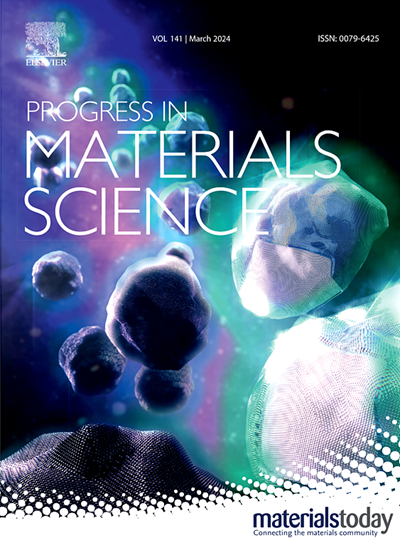Impact of inhibition mechanisms, automation, and computational models on the discovery of organic corrosion inhibitors
IF 33.6
1区 材料科学
Q1 MATERIALS SCIENCE, MULTIDISCIPLINARY
引用次数: 0
Abstract
The targeted removal of efficient but toxic corrosion inhibitors based on hexavalent chromium has provided an impetus for discovery of new, more benign organic compounds to fill that role. Developments in high-throughput synthesis of organic compounds, the establishment of large libraries of available chemicals, accelerated corrosion inhibition testing technologies, the increased capabilities of machine learning (ML) methods, and a better understanding of mechanisms of inhibition provide the potential to make discovery of new corrosion inhibitors faster and cheaper than ever before. These technical developments in the corrosion inhibition field are summarized herein. We describe how data-driven machine learning methods can generate models linking molecular properties to corrosion inhibition that can be used to predict the performance of materials not yet synthesized or tested. The literature on inhibition mechanisms is briefly summarized along with quantitative structure–property relationships models of small organic molecule corrosion inhibitors. The success of these methods provides a paradigm for the rapid discovery of novel, effective corrosion inhibitors for a range of metals and alloys, in diverse environments. A comprehensive list of corrosion inhibitors tested for various substrates that was curated as part of this review is accessible online https://excorr.web.app/database and available in a machine-readable format.
抑制机制、自动化和计算模型对发现有机缓蚀剂的影响
有针对性地去除基于六价铬的高效但有毒的腐蚀抑制剂,为发现新的、更无害的有机化合物来发挥这一作用提供了动力。有机化合物高通量合成技术的发展、大型可用化学品库的建立、加速缓蚀测试技术、(ML)方法能力的提高以及对缓蚀机理的更好理解,都为比以往更快、更便宜地发现新的缓蚀剂提供了可能。本文总结了缓蚀领域的这些技术发展。我们介绍了数据驱动的机器学习方法如何生成将分子特性与缓蚀作用联系起来的模型,这些模型可用于预测尚未合成或测试的材料的性能。我们简要总结了有关缓蚀机理的文献以及小分子有机缓蚀剂的定量结构-性质关系模型。这些方法的成功为在不同环境中快速发现适用于各种金属和合金的新型有效缓蚀剂提供了范例。作为本综述的一部分,我们整理了一份针对各种基质测试的腐蚀抑制剂综合清单,该清单可在线访问 https://excorr.web.app/database,并以机器可读格式提供。
本文章由计算机程序翻译,如有差异,请以英文原文为准。
求助全文
约1分钟内获得全文
求助全文
来源期刊

Progress in Materials Science
工程技术-材料科学:综合
CiteScore
59.60
自引率
0.80%
发文量
101
审稿时长
11.4 months
期刊介绍:
Progress in Materials Science is a journal that publishes authoritative and critical reviews of recent advances in the science of materials. The focus of the journal is on the fundamental aspects of materials science, particularly those concerning microstructure and nanostructure and their relationship to properties. Emphasis is also placed on the thermodynamics, kinetics, mechanisms, and modeling of processes within materials, as well as the understanding of material properties in engineering and other applications.
The journal welcomes reviews from authors who are active leaders in the field of materials science and have a strong scientific track record. Materials of interest include metallic, ceramic, polymeric, biological, medical, and composite materials in all forms.
Manuscripts submitted to Progress in Materials Science are generally longer than those found in other research journals. While the focus is on invited reviews, interested authors may submit a proposal for consideration. Non-invited manuscripts are required to be preceded by the submission of a proposal. Authors publishing in Progress in Materials Science have the option to publish their research via subscription or open access. Open access publication requires the author or research funder to meet a publication fee (APC).
Abstracting and indexing services for Progress in Materials Science include Current Contents, Science Citation Index Expanded, Materials Science Citation Index, Chemical Abstracts, Engineering Index, INSPEC, and Scopus.
 求助内容:
求助内容: 应助结果提醒方式:
应助结果提醒方式:


